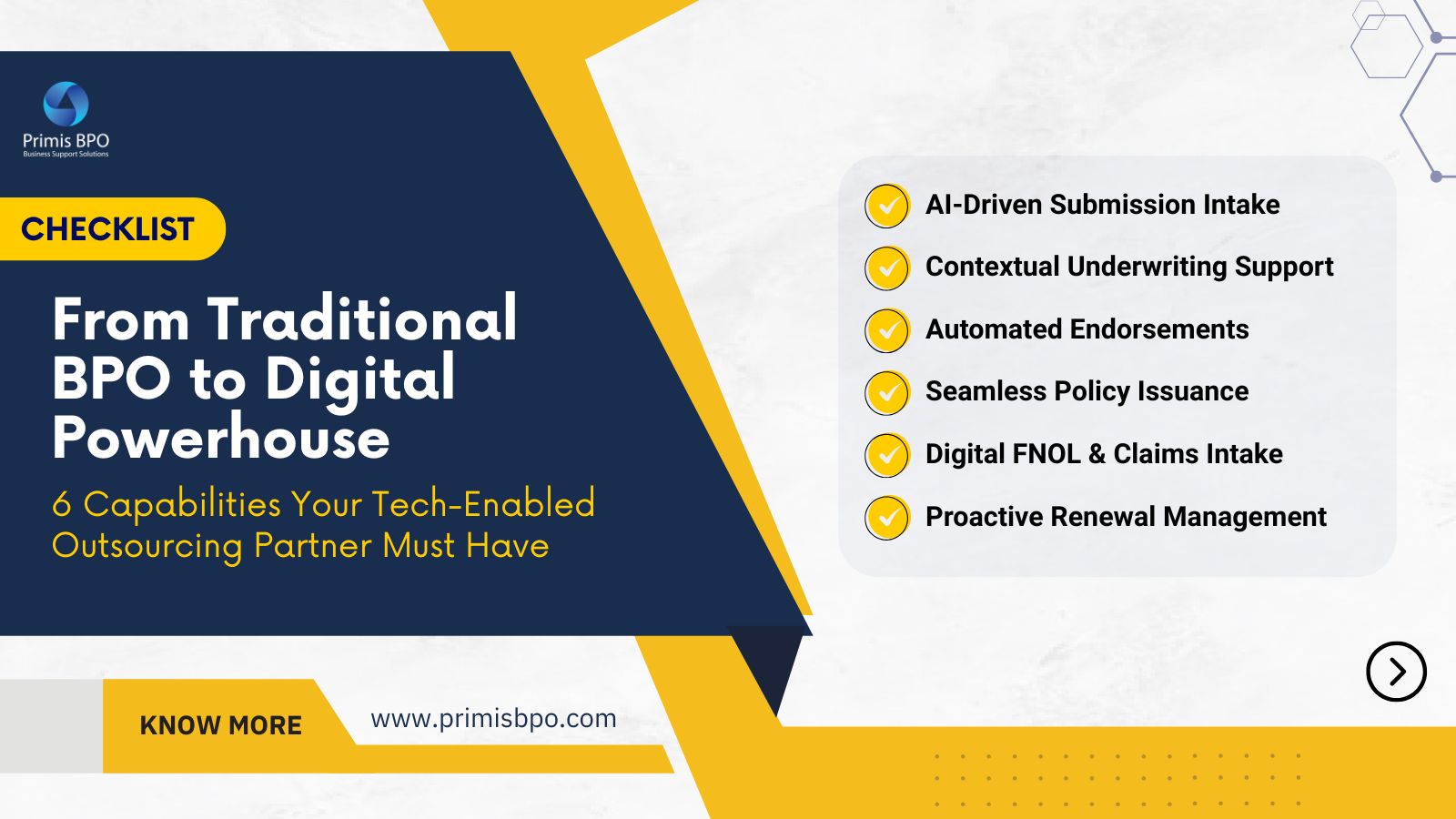
In today's digital-first world, where technology advancements are increasing demands for customer convenience and augmenting market competition, insurance companies are facing a significant challenge of keeping up with the rapidly changing pace. One of the most crucial pain points for insurance customers is the claims process, which can often be lengthy, tedious, and time-consuming. Traditional claims processing methods involve a lot of paperwork & manual data entry and often require customers to physically visit an office or send in documentation via email.
This outdated approach to claims processing is no longer acceptable in this modern era, where policyholders want greater control of the quality of service they receive from their insurers. They no longer prefer to wait to report a loss or schedule visits with an adjuster to assess the intensity of a loss. They want rapid and satisfactory service. Then what should insurers do to streamline the claims processing? How should carriers provide customers with the best possible service?
Insurance carriers need to reimagine and transform their claims process to become a cost-effective, dynamic, and, most significantly, an efficient system. This is where touchless experience can transform claims processing. As the name indicates, touchless claims processing is an automated workflow where the claims handling – from FNOL to settlement – is completely no-touch, i.e., having zero human involvement. Touchless claims processing leverages technologies like AI, ML, data analytics, big data, etc., as well as mobile apps to transfer the benefits or covered sum of an insurance policy straight into the hands of the policyholder based on the business rule engines.
This blog will highlight the challenges related to traditional claims processing and how the implementation of touchless claims processing will enhance CX.
Traditional Claims Processing Challenges
Manual Data Processing
Every claim case requires an incredible amount of information to be processed. Conventional claims processing often relies on manual data processing and entry, which takes a lot of time and effort, is prone to errors, and can slow down the entire process.
Moreover, the massive amount of paperwork involved in traditional claims processing can overwhelm insurers and customers, leading to delays, lost documents, and huge expenditures.
Inefficient Communication
Since claims processing involves many stakeholders and employees, traditional ways of communication between insurers and customers can often become slow and inefficient, leading to confusion and frustration.
Furthermore, conventional claims processing methods can be opaque, with little visibility into the status of the claim. This can lead to uncertainty and anxiety for customers, which may increase customer attrition rates.
Slow Turnaround Time
Delay in claim resolution is among the top challenges of the claims process. Traditional claims processing methods are slow, and it can often take weeks or even months for customers to receive a resolution to their claims. It usually occurs due to miscommunication, wrong coding, errors in the investigation process, etc. This can lead to dissatisfaction and frustration among customers.
Resource Shortage
Skilled professionals who understand both business processes and the tech side of insurance are hard to find and expensive to hire. Besides, manual claims processing requires a lot of employees, who have to be trained to do the job. This leads to a resource crunch and high overhead costs.
These challenges can all contribute to poor customer experience, increased costs for insurers, and inefficiencies in the claims process.
By embracing touchless claims processing, insurers can overcome these challenges and provide their customers with a faster, more efficient, and more transparent claims experience.
How Can Touchless Claims Processing Streamline Business Operations?
Touchless claims processing uses artificial intelligence, mobile tools, apps, and in-depth data analysis to ensure a claim is dealt with efficiently for both the client and the carrier.
Naturally, the first question that comes to mind of any insurer when considering a business innovation is, "how will it benefit my business?” Well, let’s walk you through the advantages of touchless claims processing:
- Policyholders usually seek on-demand services. Touchless claims processing can be a great way to meet such demands and extend self-service options, thereby retrieving happy customers.
- The claims processing cycle decreases its completion time from around 10 – 15 days to 1 – 2 days. This reduction in turnaround time yields higher customer satisfaction.
- Furthermore, touchless claims processing eliminates the expenses related to printing, mailing, and managing paperwork, enabling insurers to cut down on operational costs.
- The infusion of automation, technology, and a data-based approach to claims management will make the entire process more accurate and streamlined.
- Besides mitigating losses due to human error or inaccuracies, touchless claims processing also decreases the loss ratios and loss adjustment expenses.
- It enhances employee satisfaction as the resources are spared from the mundanity of regular claims-related tasks. This also allows the staff to concentrate on more complex roles, which can deliver higher value and accelerate revenue growth.
Typically, the road to touchless claims processing is streamlined, efficient, and transparent. Instead of making a claim via a lengthy phone call, policyholders can instantly upload the necessary FNOL information through a mobile app, or carriers can receive alerts automatically through telematics or sensors. Following this, an AI-backed system verifies the information and assesses the severity of the damage, and the policyholder can receive an almost instant update; on whether the claim is denied or approved. If approved, the automated system makes the payment directly to the policyholder’s account.
To Sum Up
Touchless claims processing has become quite popular. Today, many insurance companies are already incorporating this technology into their processes. Others have already begun investing in them as part of their long-term plan. As it is clearly evident that touchless processing is the future of claims management, you would need a reliable technology partner to embrace it. Fortunately, help is right here. Contact us to commence your journey toward touchless claims processing!
Recent Blogs

Optimizing Auto Insurance Underwriting Through Outsourced AI-Driven Risk Intelligence

[Checklist] From Traditional BPO to Digital Powerhouse: 6 Capabilities Your Tech-Enabled Outsourcing Partner Must Have

Outsourcing AI-Enabled Property Risk Analysis

Outsourcing AI-Powered Risk Assessment for Insurance Optimization

Augmented Underwriting: When Human Expertise Meets Digital Intelligence